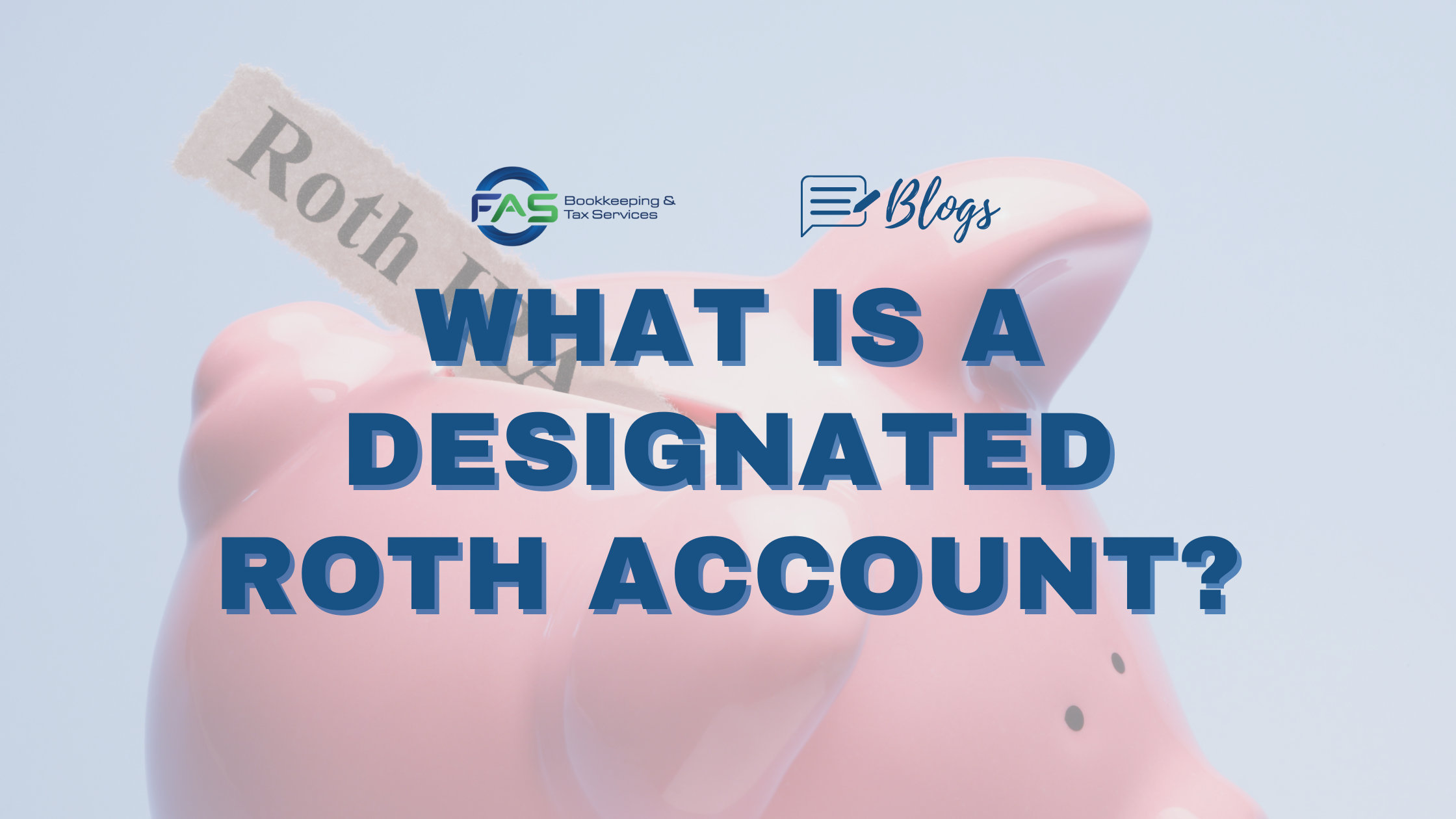What Is a Designated Roth Account?
Many 401(k) plans allow taxpayers to make Roth contributions as long as the plan has a designated Roth account. Your plan may also allow you to transfer amounts to the designated Roth account in the plan or borrow money.
Check with your employer to find out if your 401(k), 403(b), or 457 governmental plan has a Designated Roth account and whether it allows in-plan Roth rollovers or loans.
A designated Roth account allows you to:
- Make designated Roth contributions to the account; and
- if the plan permits, roll over certain amounts in your other plan accounts to the Roth account.
Pretax Deferrals vs. After-tax Contributions
Unlike pretax salary deferrals, which are not taxed when you contribute to the plan, you have to pay taxes on any contribution you make to a designated Roth account. Any pretax salary deferrals and related earnings are taxable when you withdraw them from the plan.
Your gross income for the year in which you make designated Roth contributions will be higher than if you had made only pretax salary deferrals.
Roth contributions, on the other hand, are not taxed when you withdraw them from the plan. Earnings on Roth contributions are also not taxed when withdrawn from the plan if your withdrawal is a qualified distribution. A “qualified distribution” is a distribution that is made:
- At least five years after the first contribution to your Roth account; and
- After you are age 59 1/2 or because you are disabled, or to your beneficiary after your death.
Maximum Contribution Amounts
Roth IRA. In 2023, the maximum contribution to a regular Roth IRA account is $6,500 ($7,500 if age 50 or older). Furthermore, contributions are limited by tax filing status and adjusted gross income.
Designated Roth Account. In contrast, in 2023, the maximum contribution to a Designated Roth account is $22,500 ($30,000 if age 50 or older), and contribution limits are not impacted by filing status or adjusted gross income.
New Rules for 2023
Effective January 1, 2023, employers can let employees choose between having a company match in a Roth 401k or a regular 401k. In prior years, only employee elective deferrals were allowed to be contributed to a designated Roth account. Matching employer contributions went into a pretax account within the plan (such as a regular 401k) – even if taxpayers put money in their Roth 401k.
Questions?
Depending on your particular tax situation, contributing to a designated Roth account could be a smart move. Please call to learn whether you should take advantage of a designated Roth account.




